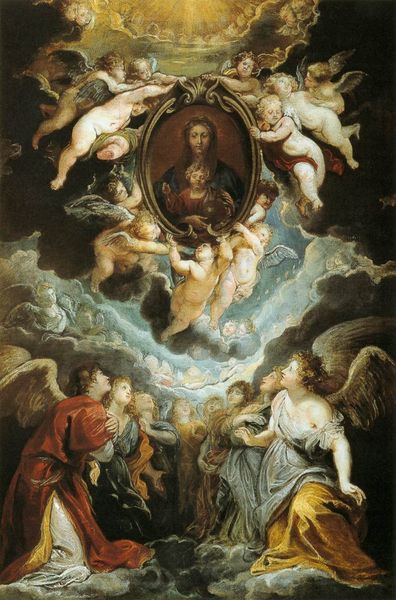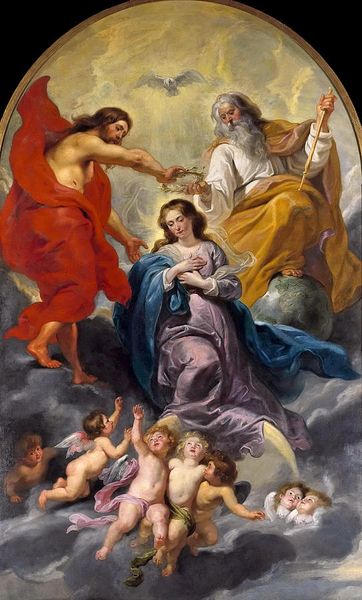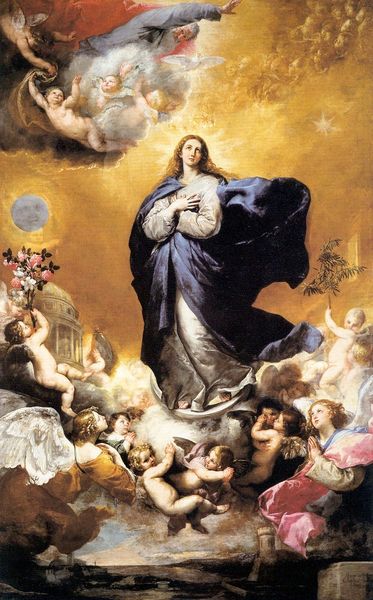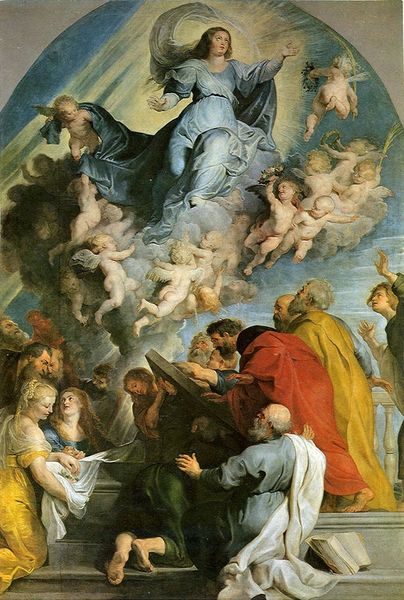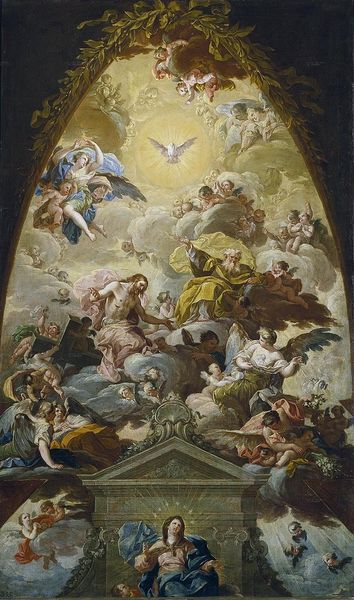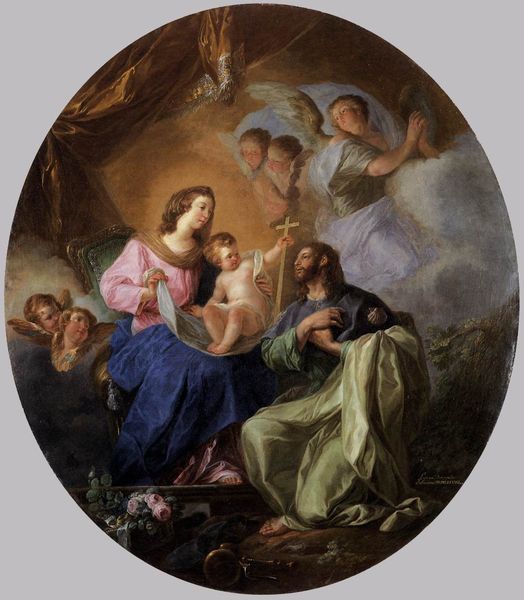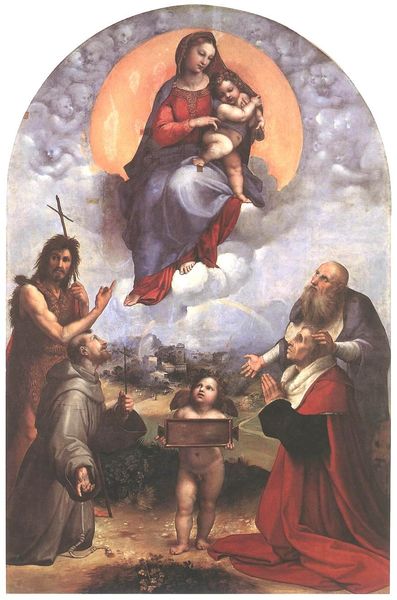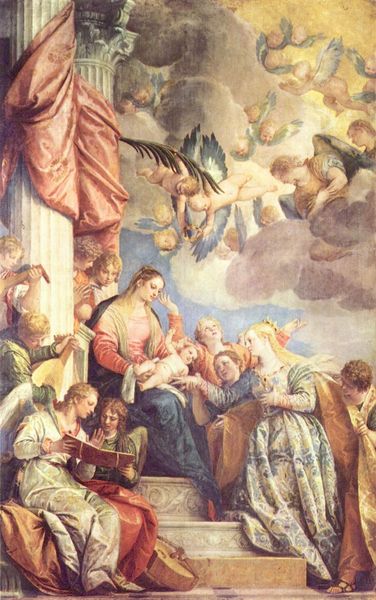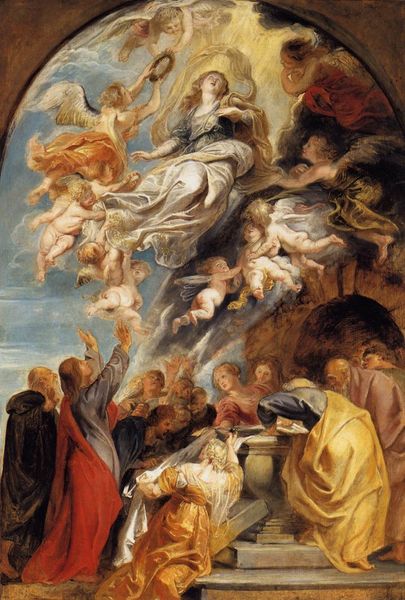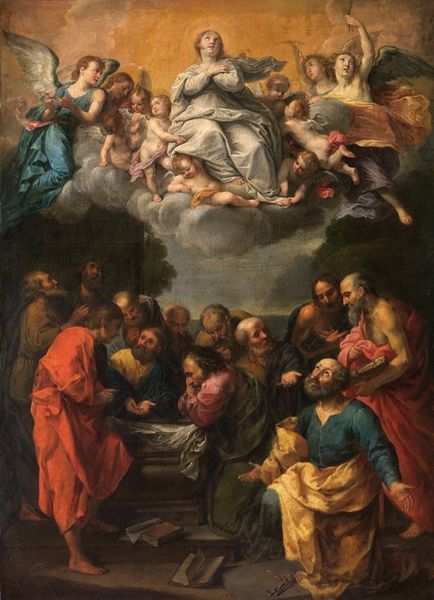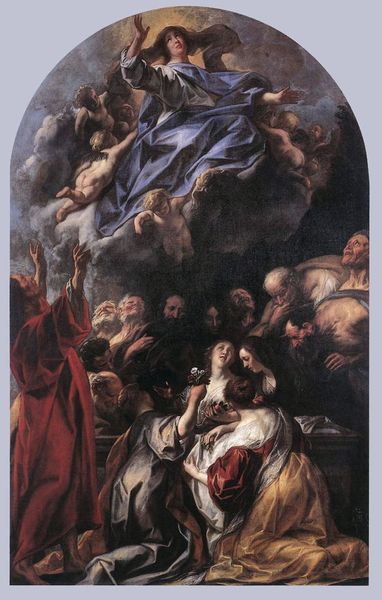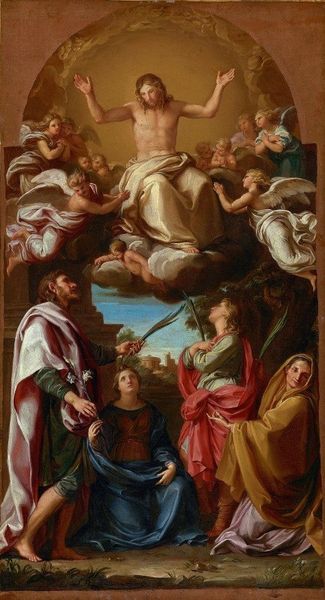
painting, oil-paint, fresco
#
allegory
#
baroque
#
painting
#
oil-paint
#
figuration
#
fresco
#
11_renaissance
#
oil painting
#
history-painting
Dimensions: 490 x 325 cm
Copyright: Public domain
Editor: Here we have Peter Paul Rubens's "Assumption of the Virgin," painted in 1626. The energy is striking! It's this dynamic swirl of figures and vibrant colors... it really pulls you in. What formal elements do you see contributing to this effect? Curator: The Baroque period favored dynamism and emotional intensity. Look at the pronounced diagonal of the composition, rising from the apostles towards the Virgin, and further accentuated by the gestures of the cherubs. Consider how Rubens employs impasto, building layers of oil paint to capture a sense of motion and divine energy, especially in the billowing clouds and radiant garments. Editor: I see how the light catches those raised brushstrokes. Is there significance to the arrangement of figures and colors? Curator: Absolutely. Observe how Rubens orchestrates a play between earthy tones among the apostles below and the ethereal blues, pinks, and whites above. This creates a clear visual distinction between the earthly realm and the heavens, reinforcing the spiritual nature of the Assumption. Also note how Rubens directs your eye to the Virgin through contrasting colors. Do you observe anything about her central placement within the scene? Editor: Yes, all the lines of perspective converge on her figure, further emphasizing the ascension narrative. Thank you! Looking through a formal lens has brought new appreciation for how composition dictates meaning in this painting. Curator: Precisely. Close observation unlocks these insights, revealing how formal qualities work to create an overall effect of dynamic spirituality and dramatic ascension.
Comments
No comments
Be the first to comment and join the conversation on the ultimate creative platform.

